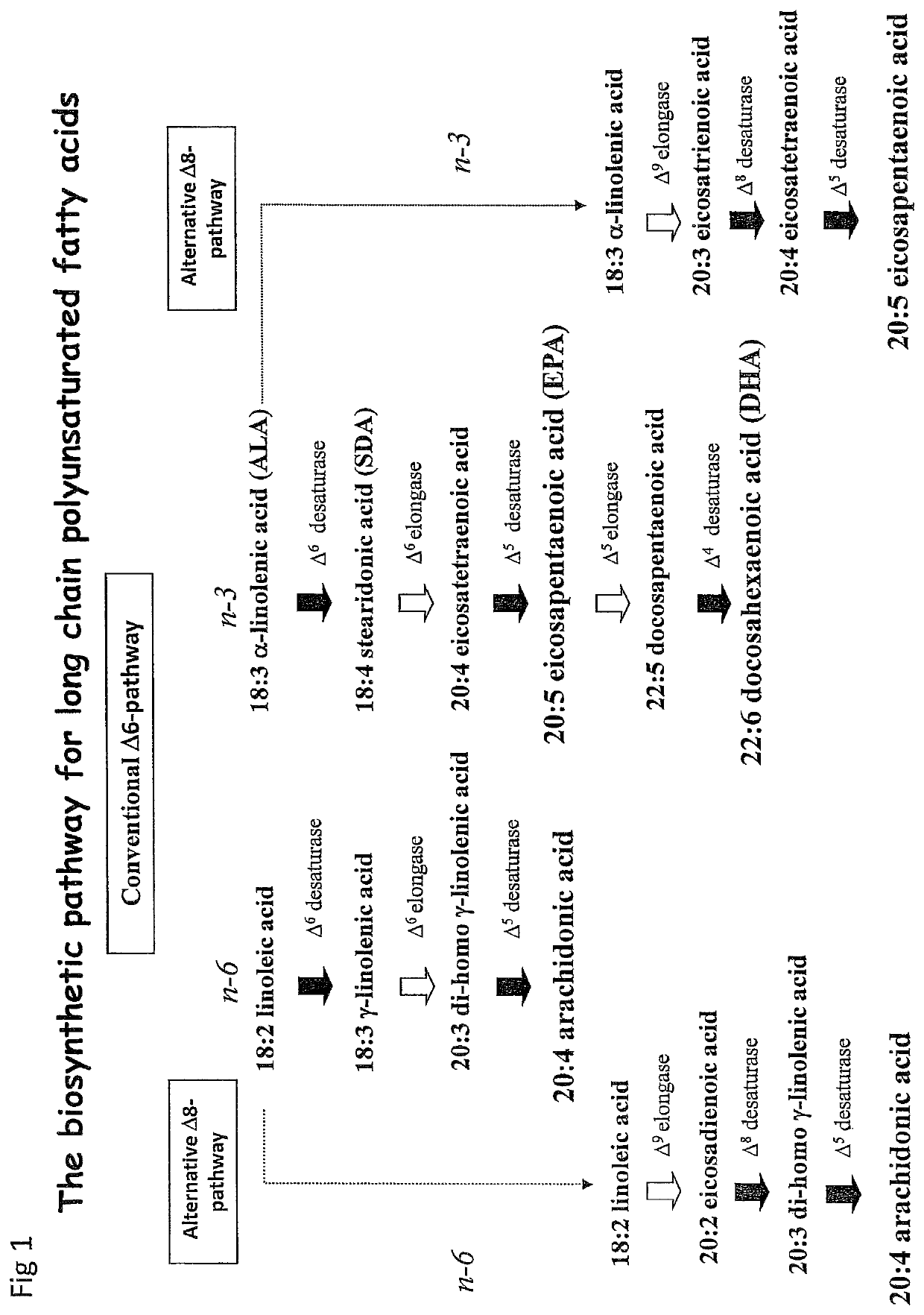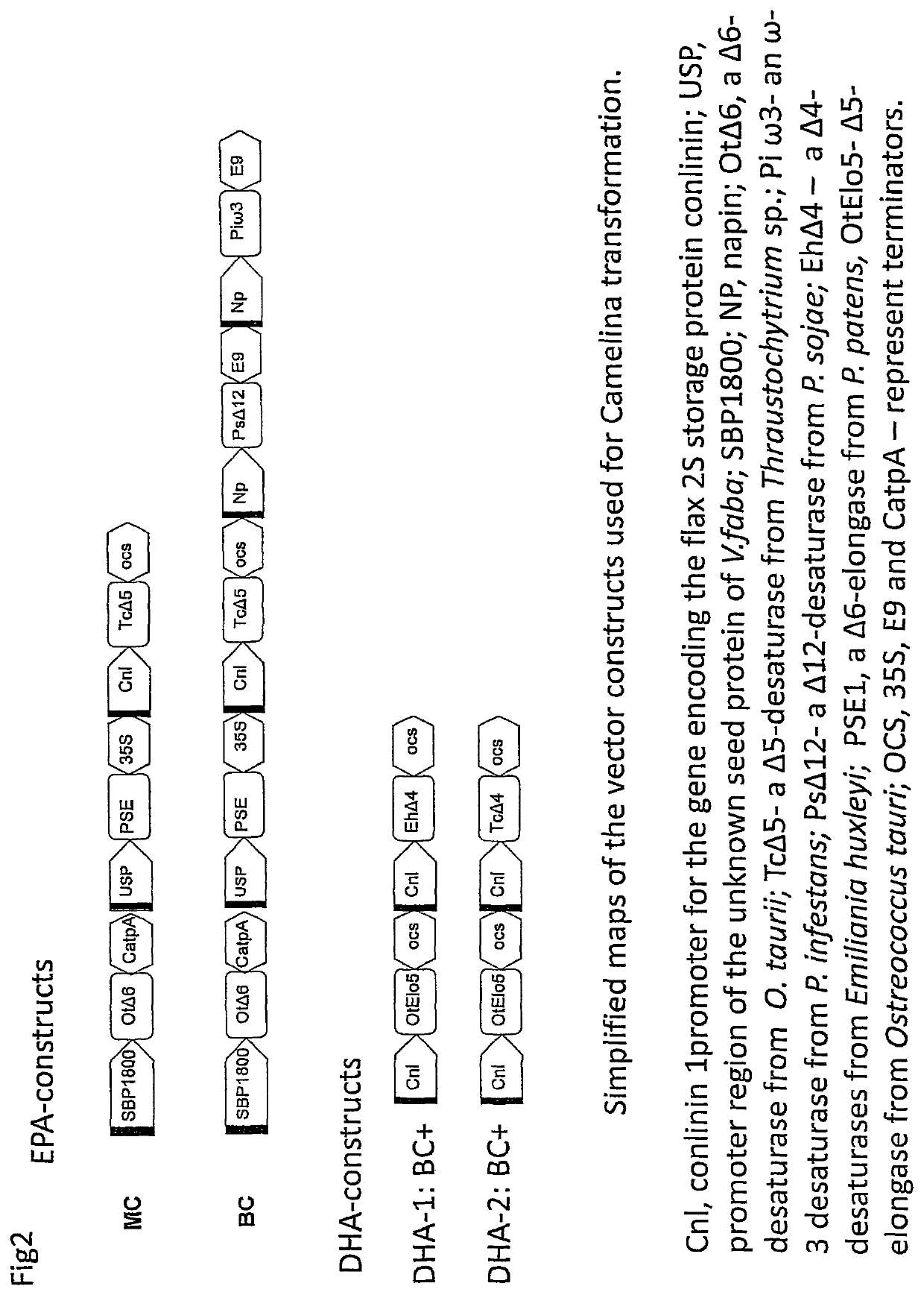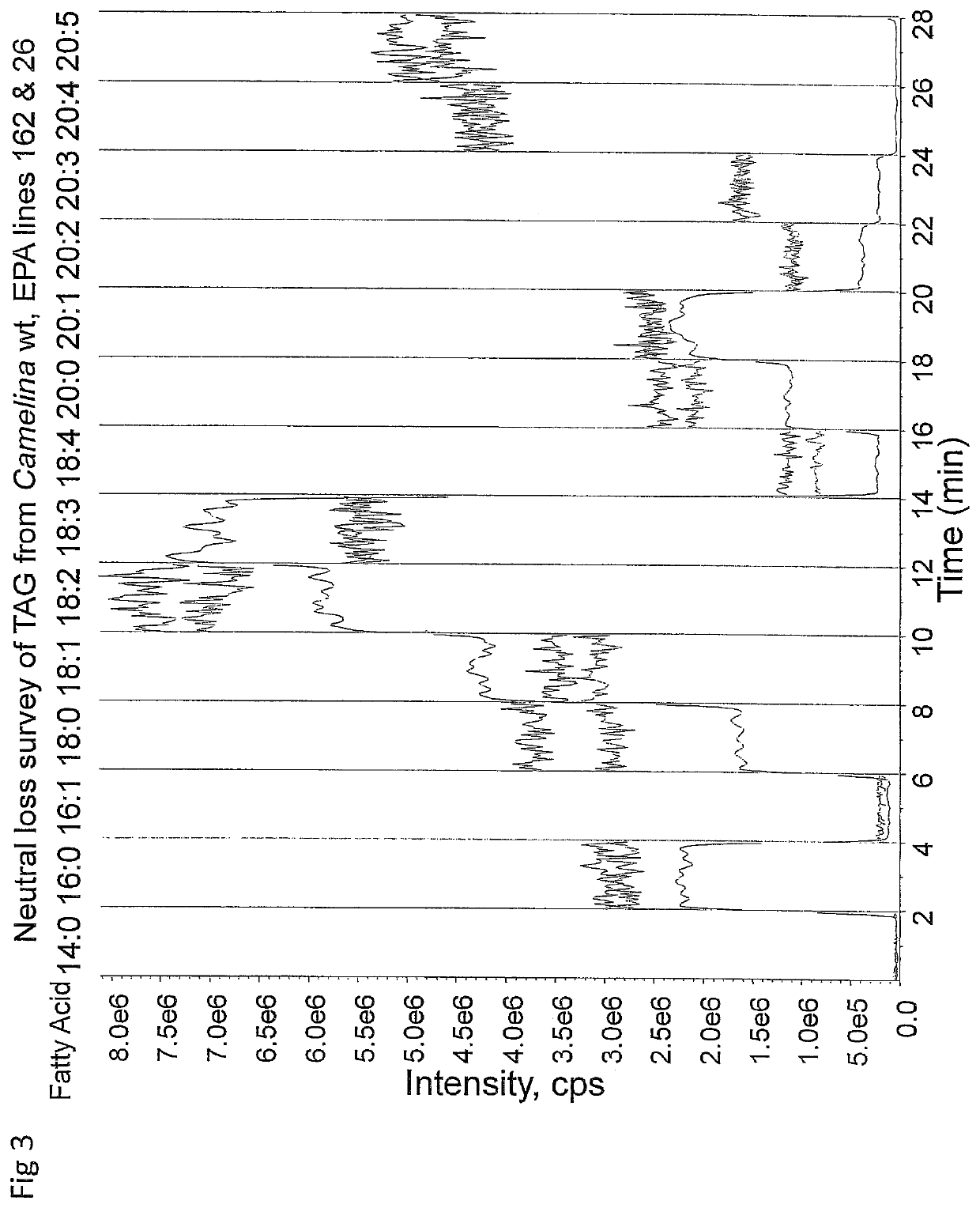Production of omega-3 long chain polyunsaturated fatty acids
a technology of omega-3 and long chain polyunsaturated fatty acids, which is applied in the direction of organic active ingredients, biochemistry apparatus and processes, and enzymes. it can solve the problems of fish oil, fish oil may undergo natural fluctuations or may be depleted, and can accumulate environmental pollutants. it has an unpleasant taste and odour, and the effect of reducing the production cos
- Summary
- Abstract
- Description
- Claims
- Application Information
AI Technical Summary
Benefits of technology
Problems solved by technology
Method used
Image
Examples
example 1
AND METHODS
Fatty-Acid Analysis
[0188]Fatty acids were extracted and methylated as described Sayanova et al., (1997) Proc Natl Acad Sci USA. 1997 Apr. 15; 94(8):4211-6 and Sayanova et al., (2003) FEBS Lett. 2003 May 8; 542(1-3):100-4. Methyl ester derivatives of total fatty acids extracted were analysed by GC and GC-MS. Data presented as representative numbers derived from replicated analysis.
Acyl-CoA Profiling
[0189]Twenty-milligrams of developing (15 days after flowering) seed material were collected, frozen in liquid nitrogen and extracted after Larson and Graham 2001 (Larson T R, Graham I A. (2001), Plant J. 2001 January; 25(1):115-25), for reverse-phase LC with either quantitative analysis of fluorescent acyl-etheno-CoA derivatives or with electrospray ionization tandem mass spectrometry (multi reaction monitoring) in positive ion mode For the analysis of etheno-CoA derivatives HPLC (Agilent 1200 LC system; Phenomenex LUNA 150·2 mm C18(2) column) was performed using the methodolog...
example 5
[0209]We varied the genes present in the original BC construct (FIG. 2), such that the PsΔ12, a Δ2-desaturase gene from Phytophtora sojae and Piω3, a ω3 desaturase gene from Phytophtora infestans flanked by Np, a BnNapin promoter and E9 terminator regions were retained, but the activities were replaced with: 1) O809d6, a D6-desaturase fromOstreococcus RCC809, flanked by the Cnl conlinin1 seed-specific promoter and OCS, a terminator region of OCS, octopin synthase gene of A. tumefaciens 2) FcElo6, a Δ6 fatty acid elongase from Fragilariopsis cylindrus CCMP 1102, flanked by the Cnl conlinin1 seed-specific promoter and OCS, a terminator region of OCS, octopin synthase gene of A. tumefaciens and 3) EmiD5, a Δ5-desaturase from Emiliana huxleyi (Sayanova et al., 2011, Phytochemistry 72: 594-600) flanked by the Cnl conlinin1 seed-specific promoter and OCS, a terminator region of OCS, octopin synthase gene of A. tumefaciens
example 6
[0210]We varied the genes present in the original BC construct (FIG. 2), such that the PsΔ12, a Δ12-desaturase gene from Phytophtora sojae and Piω3, a ω3 desaturase gene from Phytophtora infestans flanked by Np, a BnNapin promoter and E9 terminator regions were retained, but the activities were replaced with: 1) O809d6, a D6-desaturase from Ostreococcus RCC809, flanked by the Cnl conlinin1 seed-specific promoter and OCS, a terminator region of OCS, octopin synthase gene of A. tumefaciens 2) CeElo6, a Δ6 fatty acid elongase from Caenorhabditis elegans (Beaudoin et al., 2000, Proc Natl Acad Sci USA. 2000 Jun. 6; 97(12):6421-6) flanked by the Cnl conlinin1 seed-specific promoter and OCS, a terminator region of OCS, octopin synthase gene of A. tumefaciens 3) EmiD5, a Δ5-desaturase from Emiliana huxleyi (Sayanova et al., 2011, Phytochemistry 72: 594-600) flanked by the Cnl conlinin1 seed-specific promoter and OCS, a terminator region of OCS, octopin synthase gene of A. tumefaciens
PUM
| Property | Measurement | Unit |
|---|---|---|
| mol % | aaaaa | aaaaa |
| mol % | aaaaa | aaaaa |
| mol % | aaaaa | aaaaa |
Abstract
Description
Claims
Application Information
 Login to View More
Login to View More - R&D
- Intellectual Property
- Life Sciences
- Materials
- Tech Scout
- Unparalleled Data Quality
- Higher Quality Content
- 60% Fewer Hallucinations
Browse by: Latest US Patents, China's latest patents, Technical Efficacy Thesaurus, Application Domain, Technology Topic, Popular Technical Reports.
© 2025 PatSnap. All rights reserved.Legal|Privacy policy|Modern Slavery Act Transparency Statement|Sitemap|About US| Contact US: help@patsnap.com



